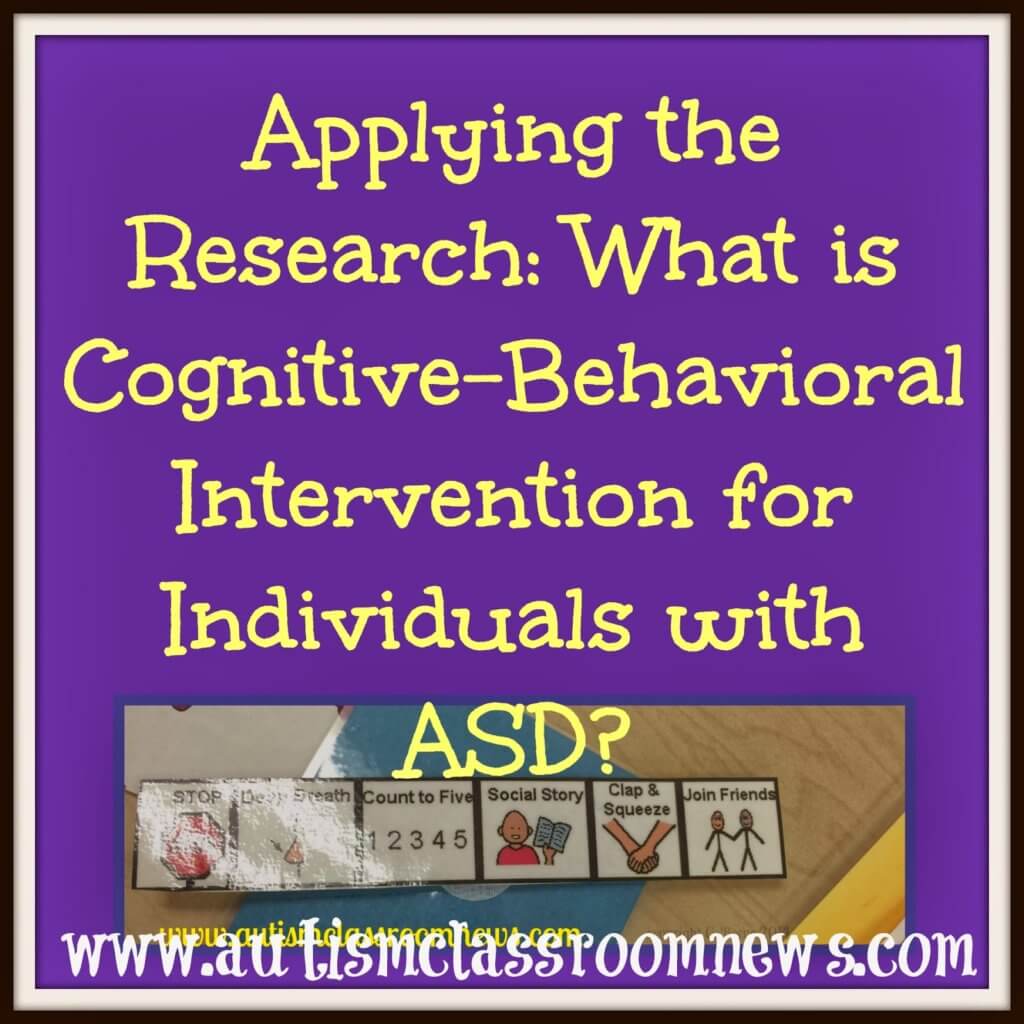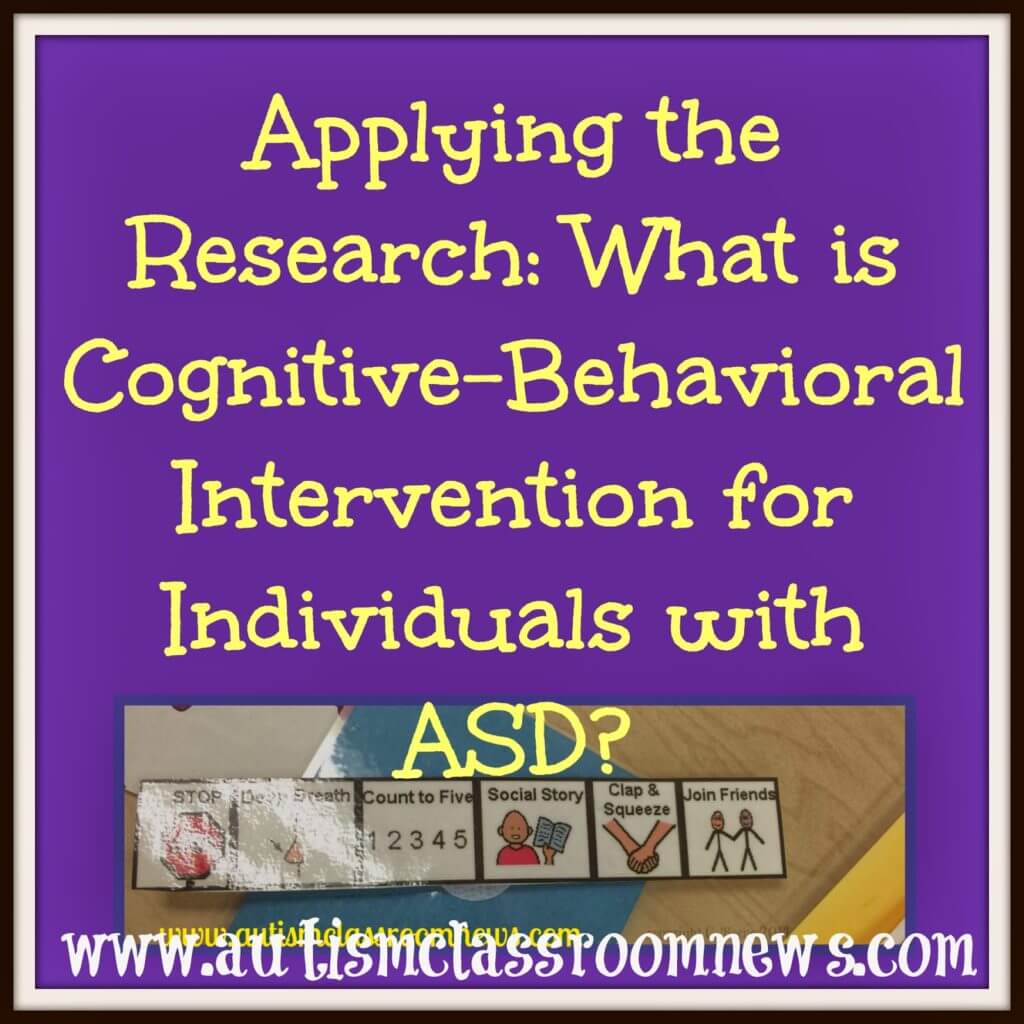Sharing is caring!
I have been talking about the National Professional Development Center for ASD’s new evidence-based practices report. You can find the previous posts and strategies I have covered HERE. One of the strategies that was added to the list of EBIs is Cognitive-Behavioral Interventions. This is an area that typically isn’t covered in most educational programs, but they can be a very strong tool in the toolbox beyond formal cognitive-behavioral therapy (CBT). I’m not saying that teachers or related service providers need to be able to conduct CBT as that takes a good bit of training and, really, teachers and staff have enough areas of expertise expected of them as it is. However, there are some strategies that you use or could use in your classroom that can be informed by cognitive behavioral interventions. Superflex and many of the Social Thinking(TM) strategies are based on CBT elements. Relaxation strategies are also based on CBT. Many of our students with ASD struggle with anxiety, depression and anger management issues with some estimates indicating that 50% or higher of individuals on the spectrum struggle with at least one of these issues. These issues significantly impact their education and learning and strategies that address them must be part of their overall intervention in order to be independent after school. So, in this post I want to talk about what cognitive behavioral interventions are and what the research says for individuals with ASD. Then I’ll talk a bit more about specific interventions and some of the research studies themselves and some strategies that you can use in your classrooms, as well as resources to do so.
So, what are cognitive behavioral interventions? They are based on the assumption that maladaptive cognitive processes (like anxiety) lead to maladaptive behaviors and that behavior change can be obtained by changing the way someone thinks about things. For individuals on the spectrum, and others, that means helping them to think about things in their lives, their own thoughts and perceptions and how others perceive them differently. Many individuals with ASD have very black and white thinking. Things are either good or bad. They also frequently have very rigid thinking–shopping always has to happen on Tuesday. They perceive challenges to these thoughts as challenging and often anxiety-provoking. They often tend to look at things from a negative viewpoint. So if one thing is bad, everything is bad (black and white) and there is no way to fix it. In some CBT strategies, these are referred to as poison thoughts. The process of intervention is to teach the person to think about these thoughts differently and cue specific behavior patterns (like a relaxation series) when certain thoughts occur.
The idea is to help the person recognize the negative or poison thoughts (e.g., I have no friends), reframe the thought in a more positive way (e.g., I have a small group of friends who care about me), and develop a set of tools to help them manage the anger or anxiety that the thoughts create (e.g., relaxation strategies). For individuals with ASD, the research shows that CB strategies were effective for addressing anger management, anxiety, executive functioning, social abilities, and even independence in adaptive functioning.
The research was conducted with elementary students and high school students. It’s reasonable to assume because of the cognitive abilities required to think through and learn the strategies that individuals who are in the average intellectual functioning level benefit most and that individuals younger than elementary age would probably not benefit as much.
Below is a video that is the beginning of a CBT strategy designed for students and there are series by the developer as well. It’s a good overview of some of the issues. In my next few posts I will talk about the steps of most CB interventions, some tools to help students develop better skills at recognizing and addressing the poison thoughts or mistakes in thinking, and some things you can do in the classroom to help students manage their anger and anxiety.
Until next time,





![Summer resources to help survive the end of the year in special education [picture-interactive books with summer themes]](https://autismclassroomresources.com/wp-content/uploads/2018/05/SUMMER-RESOURCES-ROUNDUP-FEATURE-8528-768x768.jpg)




